Software and corporate teams use computers to get tasks and projects completed within the required timelines. In theory, computers are supposed to make task completion faster, efficient in a more organized manner. However, computers don’t necessarily improve our output without several manual tweaks of available software to match a team’s workflow needs.
Workflow management involves a series of well-defined tasks, steps, the input of data, and sequentially processing to achieve results such as task completion in a project. In essence, workflows represent the mechanism of getting work done. Each team has its own preferred best practices to get the job done. For example, the developer team can employ methodologies like Agile, Waterfall, or DevOps principles to achieve desired goals.
The article will highlight some of the best free and open-source workflow management software.
Workflow management tools
Business, corporate, or individual processes require certain levels of automation. You can use workflow management software to automate business processes, improve efficiency, accountability, and productivity. However, corporate workflows aren’t as simple as individual or small-sized team workflows. Good workflows focus on subdividing a project into multiple tasks with a focus on sequential task completion. Completion of these independent tasks together results in achieving more significant organizational objectives and projects.
The ever-changing business environments and processes with the rise in technology and automation have made workflow management software necessary to accomplish complex processes with minimal human intervention.
Types of workflow management tools
Document workflow management software
Document workflow tools are essential when documents hold significant value in the project processes of a team. The flow of documents through different techniques becomes central to the plans of the organization to improve the company’s efficiency. In essence, the output of a process on one document at a given stage becomes the input to the next stage. Document-centric systems are used in activities that involve document approval and review, translation, and transcription.
Human-centric workflow management software
Human-centric workflow tools are involved in designing and creating processes, tasks, and methodologies that involve significant human input. Thus, they are essential in functions such as writing proposals and data analysis.
Integrated workflow management software
Integrated workflows involve iterative and sequentially executed repetitive tasks where the contributions of human beings are minimal.
Consequences of not using workflow orchestration tools
Not having workflow management systems in your team can have the following adverse effects on your organization.
- Poor team communication and collaboration
- Decrease in team efficiency
- Excessive redundancies in project completion
- Ineffective data processing
- Inefficient task tracking and compliance
- Compromised quality
Advantages of workflow management tools
- Increased efficiency in project completion through streamlining processes and tasks
- Effective compliance and audit tracking
- Improved communication and collaboration
- Improved product and process quality
- Improved business strategy and planning
- Reduced redundancy and effective resource utilization
- Low risks involved in business processes
Taiga
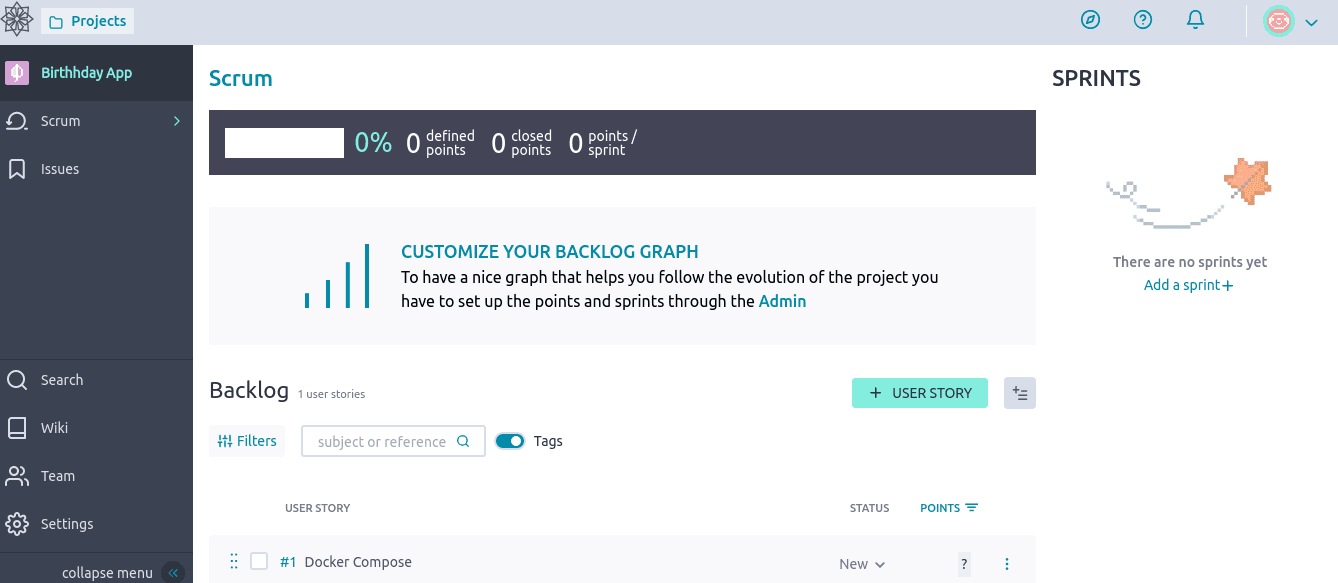
Taiga Scrum
Taiga is an open-source project and workflow management system that is designed to solve the problem of usability. The project has been under development since early 2014 by a team at Kaleidos. Currently, Taiga Agile gives the project a formal structure.
The project boasts usability features that make it easy to create projects using either Kanban or Agile templates. If you use Agile, you can also create sprints and add user stories. Moreover, you can move user stories to a sprint and assign tasks to it. You can also create projects with a Kanban template that allows post-it-type tasks windows using an easy-to-use drag and drop user interface.
Top features
- It is highly customizable with sub-tasks and EPICS to fit your workflow.
- It supports multiple workflows with Swim lanes. You can create many swimlanes to distribute your work across different categories effectively.
- It includes Work in Progress Limits (WIP) to monitor whether you exceed a particular Kanban status capacity.
- It features extensive filter options and search functionalities.
- It allows a user to switch between Kanban and Scrum modules or have both activated.
- Supports view options like zoom level like compact, default, detailed, and expanded.
Kanboard
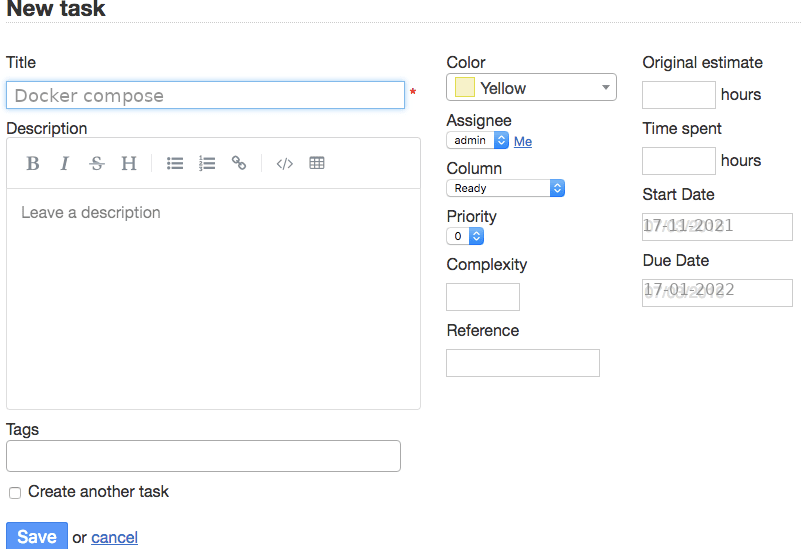
Kanboard Task creation
Kanboard is a minimalist, open-source kanban workflow management system. It is developed in PHP and is made available under an MIT license. Kanboard is easy to install and uses few resources. It includes key features such as task searching and filtering, attachments, subtasks, commenting, and many more. You can also easily export your cards in a variety of formats.
Top features
- It features a minimalist, simple user interface that makes it easy to create cards for tasks in your project.
- It includes a detailed issue-management framework with custom fields for type, priority, severity, and many more.
- It features an elegant visual overview of your tasks and their current status.
- It supports the drag and drop of tasks to add, remove, and rename columns.
- You can break down a task into sub-tasks, estimate timelines and complexity.
- It features decent analytic and reporting options.
- It supports enhanced security features with multiple authentication backends such as LDAP/Active Directory server and OAuth2 providers like GitLab, Google, or GitHub.
- You can run it on a Raspberry Pi.
- It is multilingual and is available in over 30+ languages.
- The project is under constant development, and you can be part of the team and contribute to the Kanboard Github code repository.
Backlog
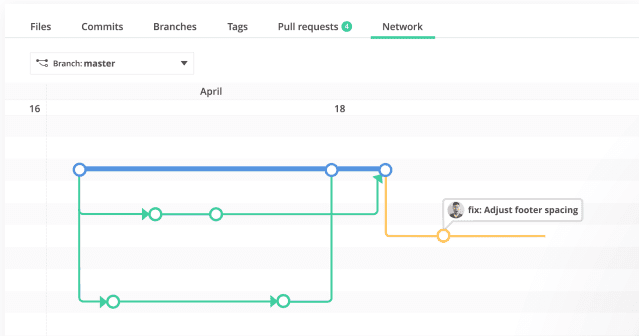
Backlog bug tracking
Backlog is a workflow management software built for developer teams to manage their projects. It features a single platform with a simple but powerful interface that can be adapted to suit users’ needs. It helps the developer and designer team members to collaborate and connect on one platform from any place and device. You can view a projects’ progress with elegant visualizations like Gantt charts and Git graphs. It also facilitates the transparency of information that enables teams to deliver the projects within the desired timelines.
Top features
- You can manage project tasks and schedules using Gantt charts.
- It features advanced visualization of all tasks in your projects.
- It makes it straightforward to create, assign, and update tasks.
- Enables you to break down and design tasks into subtasks.
- It is ideal for developers to collaborate in coding and fixing bugs.
- It includes advanced features to manage timelines and deadlines for projects and tasks.
- It features a free version that allows up to 10 users to manage a project with free storage making it a good option for startups and small teams.
Apache Airflow

Apache Airflow Gantt chart
Apache Airflow is a free and open-source workflow management tool for creating, monitoring, and managing project workflows. The platform is built on four principles to create dynamic, elegant, extensible, and extensively scalable workflow management software.
Apache Airflow features Directed Acyclic Graphs (DAGs) to help teams design, schedule, program, and automate data flow through nodes. Pipelines in Apache airflow represent the direction of data movement. In essence, a node’s (task) output is usually the input to another node. For example, a process must be completed or restarted for the team to complete all tasks.
Top features
- It features dynamic creation of pipelines using python and DAGs (Directed Acyclic Graphs) to ensure seamless process creation.
- It features an elegant, simple, and enriching user interface that allows quick and almost flawless workflow creation and pipeline configuration.
- It is highly scalable with over a hundred individual processes to allow a user to envision an environment that suits multiple scenarios.
- It is highly extensible. You can create predefined sets of operators and variables that aid their level of abstraction and understanding.
- You can integrate it with multiple applications and platforms such as Amazon Web Services (AWS), Google Cloud, and Microsoft Azure.
- It features advanced visualizations to analyze processes with multiple graphs views such as tree view, Graph View, and DAG.
- It features concise monitoring and reporting on overall project progress.
Apache Taverna
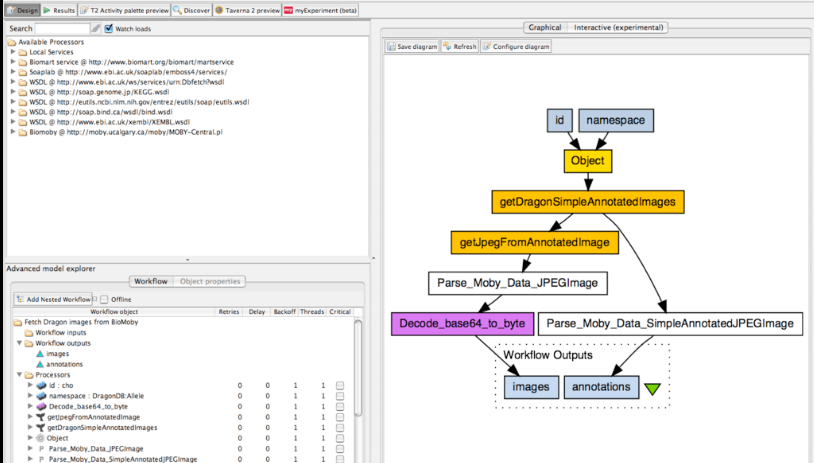
Apache Taverna
Apache Taverna is a free and open-source workflow management system designed for scientific teams to create and manage scientific workflows. The workflow tool is platform-independent and can be accessed using a variety of operating systems. The Apache Taverna suite includes the Taverna engine, the Taverna Workbench, and the Taverna Server. These components work together to aid scientists in building complex data workflows and performing analysis on them. In addition, the suite accepts data from public and private sources in distinct fields like medicine, geography, and sports analytics.
Top features
- It features command-line execution to allow quick and easy workflow management and monitoring.
- It includes Taverna Server for remote access to workflows.
- It features advanced security features such as HTTP authentication to facilitate protection for users of the system.
- It includes a rich and diverse set of pre-loaded workflows adoption to create from scratch.
- You can easily optimize and monitor your team’s workflow progress.
- You can integrate Tarvena with other scientific and non-scientific service providers such as R, Excel Spreadsheets, BioMart, and SoapLab.
- It allows teams to design, analyze, and share self-created workflows using several myExperiment services.
- You can open workflows in a web browser.
- It features an elegant interface that makes it easy to navigate its workbench environment.
- It features extensive debugging tools and extensive customer support.
Camunda
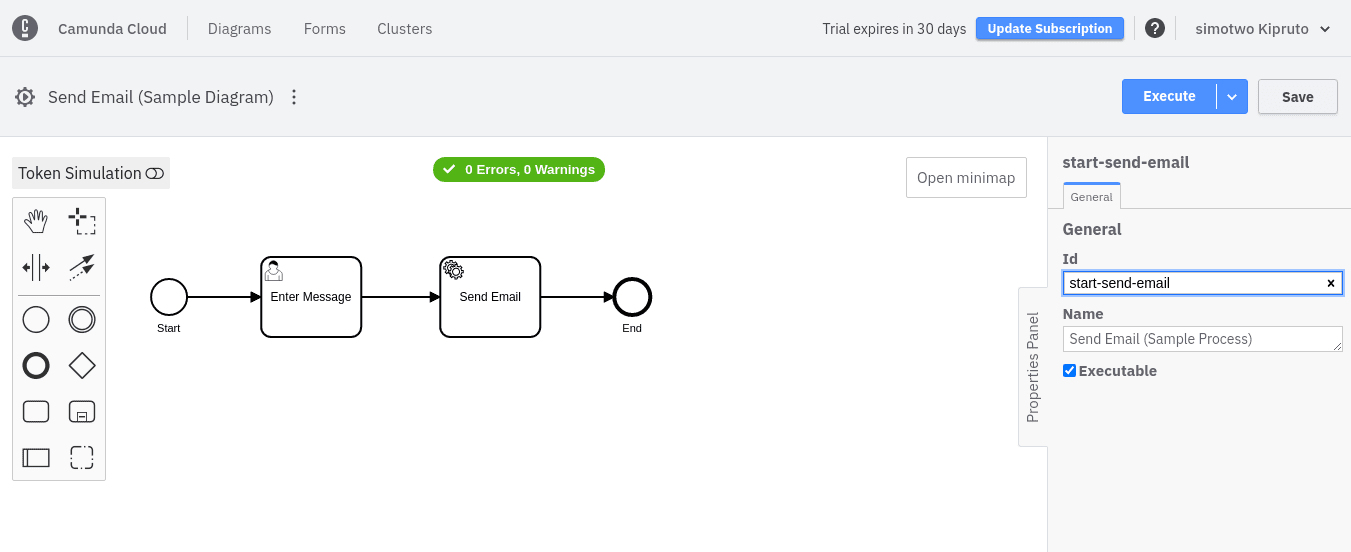
Camunda
Camunda is an open-source workflow management tool with extensive features and automated tools to create efficient workflows suitable for business teams. The project is developed on a lightweight Java Application Program Interface (API) stack. The stack creates a platform that is robust and easily scalable.
Camunda is created on fundamental principles of design, automation, and improvement. These principles ensure the process of designing workflows becomes straightforward. The workflow management system is agile in handling workflows for complex organizations with extensive data visualization capabilities.
Top features
- You can create, convert workflows to HTML and XML file types, and share them among several teams.
- It includes complex decision table integration to enhance business rules-based decision making and increase task completion and output.
- You can easily integrate it with other Camunda plug-ins and technologies.
- It features a BPMN Modeler that allows the creation of executable files for multiple BPMN and DMN engines.
- It supports BPMN 2.0 symbols to efficiently represent complex tasks to make them easily understandable to teams.
- It includes Cockpit, a highly detailed dashboard to identify, analyze, and resolve workflow errors.
- It includes predefined configuration for customized and low code templates for quick workflow designs.
- It boasts of improved performance through the separation of runtime and historical data.
- It is highly scalable through the efficient sharing of databases by multiple entities.
- It features advanced security features for authorization and safeguards workflow processes.
- It includes the Tasklist user interface to manage task assignments, user communication, and track progress.
- It features advanced analytics tools and dashboards to manage reports of workflows.
- You can efficiently integrate it with other process tools such as BPMN 2.0 heat maps, alerts, and variety model testing.
- It features cloud integration for accessing multiple platforms and devices.
Fun Fact: Worker bees rely on a transport system to get around.
Processmaker
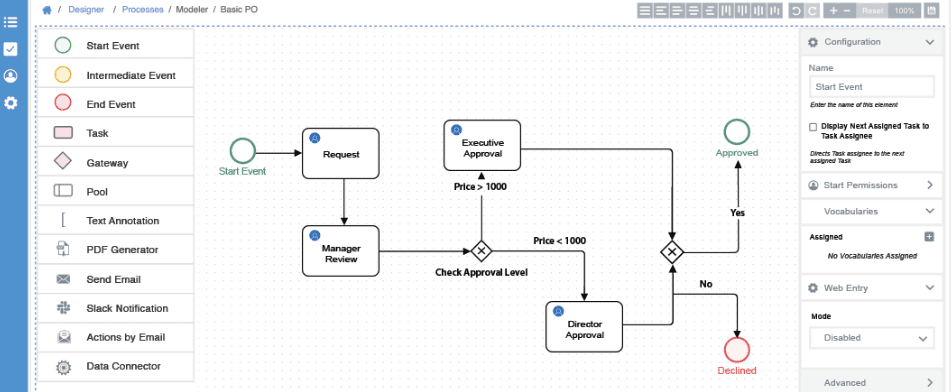
Processmaker
ProcessMaker is an open-source workflow system that allows users of business process management (BPM) to generate low-code workflows and design complex processes quickly and efficiently, especially for enterprises. It includes agile BPM technologies that allow users to drag and drop elements on their workbench interface to quicken process design and analysis.
ProcessMaker incudes visual flowcharts to help teams build approval-based workflows where notifications are built into every task and process. The system is web-based with support for WYSIWYG (what-you-see-is-what-you-get) features. This reduces barriers to entry for teams in different industries like healthcare, manufacturing, education, telecommunications, and many more.
Top features
- It supports extensive portability for quick implementation of workflows across teams.
- It supports integration with several third-party applications and services such as DropBox, Salesforce, and many more.
- It is cloud-hosted and accessible on Amazon Web Services (AWS), suitable for enterprises.
- It features enhanced security features and user authentication protocols to protect sensitive workflows.
- It allows organizations to customize and use ProcessMaker functionalities as their own
- It features a ProcessMaker RESTful API and an (SDK) software development kit that allows teams to design insightful workflows.
- It features a screen builder that allows users to build web-based interactive forms.
- You can easily access its database using APIs.
Cflow
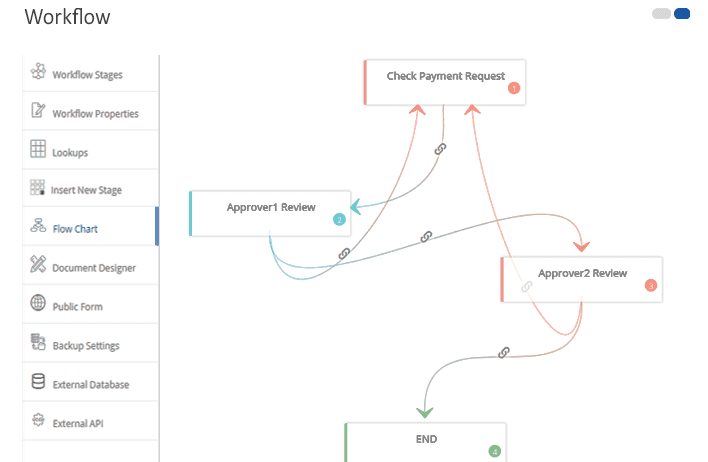
Cflow Chart Diagram
Cflow is a cloud-based open-source workflow automation software hosted on AWS. It is essentially a code-free workflow management tool. The software operates on assets of predefined library templates of used workflows for several types of organizations.
Top features
- It features an elegant, resilient interface that supports drag and drop.
- It supports integration with over 1000 third-party applications such as SAP, Zapier, and many more.
- It includes a central dashboard to track all process performance and enhance efficient decision-making.
- It features a visual workflow designer with advanced predefined, industry-specific templates.
- It supports robust notification to alert users on the progress of tasks and projects.
- The suite includes an intuitive mobile application to build and monitor workflows on the go.
- It supports advanced document management utilities.
- It ensures compliance by creating an audit trail of all processes and tasks in a project.
- It supports advanced authentication and encryption for tasks and processes in a project.
- It includes a customizable decision-making engine that you can quickly implement across different workflows and tasks.
Taskboard

Taskboard Create Task
Taskboard is yet another workflow management system that uses kanban boards to manage tasks in a project. It is designed as a minimal application with a simple, clean interface to keep track of tasks and processes in a project. It is an open-source alternative to the closed source Trello. TaskBoard makes it easy to start and keep track of jobs you need to get done. It includes visual features that allow users to manage status checks.
In kanban boards, items on a list are each treated as “cards.” Cards might represent a feature, which is moved across boards to represent its flow through development, testing, deployment, and completion. It allows attachments to these cards with images, additional lists, links, a person assigned to the task, and many more. It also features additional tools to give you a complete picture of how tasks move across a workflow.
Top features
- It is a self-hosted open-source software that is easy and quick to install on any web host
- It supports unlimited boards that represent different projects
- You can customize columns within boards and persistent collapse or expand as per a user’s needs
- It is highly customizable with custom categories, colors, assignees, attachments, descriptions, and comments
- Each task displays a complete history of activities, making it easy for admins to manage projects
- It features extensive user management for regular users, admin, and board admin
- It creates an SQLite database on installation
- Supports RESTful API integration
Bonita
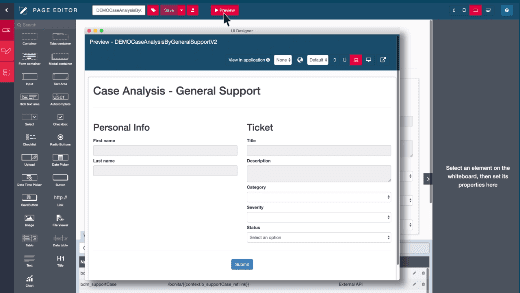
Bonita Case Analysis
The Bonita Platform is a workflow tool that allows business teams to create and monitor process-based implementations within the organization. It is a cloud-based, open-source system designed to achieve efficiency and digital transformation of business processes. It includes several components like Bonita UI Designer to create responsive user interfaces with the WYSIWYG.
Top features
- It includes Bonita studio that allows rapid and agile development of processes.
- It allows you to connect to databases, web services, and social platforms.
- It supports integration to enterprise systems such as ECMs, ERPs, CRMs.
- Supports inter-linking of tasks to allow users access via web portals and applications.
- It is highly customizable to modify and personalize processes and tasks with out-of-the-box features.
- It includes Bonita Portal to manage all tasks.
- You can use connectors and REST APIs to integrate with other enterprise technology stacks.
- It features advanced and efficient reporting functionality of historical and real-time insights on the progress of tasks and processes.
- You can easily integrate it with many third-party applications
How to choose an ideal workflow orchestration software that suits your team’s
Before selecting a workflow tool that suits your needs, you should ensure that it includes the following features as a bare minimum.
- Access control: Managing access control of team members is essential in ensuring authorized access to resources and sensitive organization data.
- Calendar management: A calendar enables an organization to efficiently track events, schedule meetings, and send reminders of key events and projects milestones.
- Automate business processes: Workflow management systems should have some form of automation of business processes to reduce cost and increase productivity.
- Document management: You should be able to maintain a directory and efficiently access documents.
- Compliance tracking: Your system should ensure no rules and regulations are broken when working on a process.
- Enhanced communication, notification, and reminders: An ideal workflow management system should minimize communication gaps through automated progress checks to keep users updated on the progress of tasks. It should include advanced notifications and reminders to execute tasks at a particular time. It gives users a significant advantage in-process monitoring and allows strong collaboration between teams.
- Reporting and analytics: Reports and data-backed analysis allow users and teams to make informed decisions.
- Form management: Forms allow teams to manage documentation and subsequent data processing while minimizing human intervention to process them. It is especially critical in scenarios where extensive data storage is a necessity in your organization.
Wrapping up
If you work in a team, you will notice that inefficient and poorly implemented workflows negatively impact project deadlines. However, when designed correctly, workflows implemented using Kanban, Agile, or Scrum lead to better productivity, reduced production cost, revenue growth, and enhanced collaboration.
The article has discussed the best available open-source workflow management systems. These tools can be alternative to Trello that unfortunately doesn’t make it to our list because it is a closed source software despite it being free for use. Choosing the right workflow or collaboration software has never been more critical in successful teams.
Do you have another favorite tool I missed on my list? Let us know. Sharing is caring!!


2 comments
Nice Written! Thanks for your sharing. I wonder if you can add ZenTao to your list, it’s my favorite and very powerful. Once again, thank you a lot!
Thanks for this ! I was wondering if you’d come across OpenFn ?